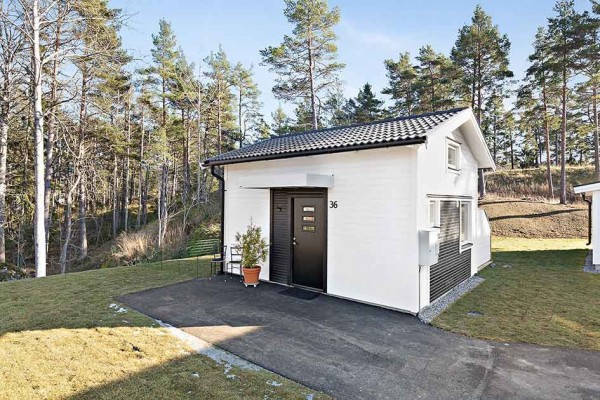Traveling to Europe is a bucket-list dream for many, and for good reason. From iconic cities like Paris and Rome to charming villages in the Alps or sun-soaked Mediterranean coasts, Europe offers an incredible blend of culture, history, cuisine, and scenery.

However, with so much to see and do, many travelers fall into common tourist traps or logistical errors that can impact their experience. Whether you’re visiting for the first time or returning for another round of adventure, here are the Top 10 Mistakes Tourists Make in Europe—and how you can avoid them.
1. Trying to Visit Too Many Countries in One Trip
One of the most common mistakes? Overpacking your itinerary. Europe may look small on the map, but each country is packed with history, culture, and attractions worth taking your time to explore.
❌ What Happens:
You spend more time on trains, buses, and flights than actually enjoying the places you came to see.
✅ How to Avoid It:
Stick to 2–3 countries max in a 2-week trip. Consider slow travel and really get to know each location. Remember: quality over quantity.
2. Not Validating Train or Metro Tickets
In many European cities, buying a train or metro ticket is not enough—you have to validate it before use.
❌ What Happens:
Tourists often get fined on the spot by transport inspectors, even with a valid ticket.
✅ How to Avoid It:
Look for the validation machine at the entrance or platform. It’s usually a small yellow or red box. If you have an e-ticket or app-based pass, make sure it’s activated correctly.
3. Ignoring Local Customs and Dress Codes
Europe is a patchwork of cultures, and what’s acceptable in one country may be frowned upon in another.
❌ What Happens:
Tourists stand out in religious sites, wear beachwear in historic towns, or behave in ways locals consider disrespectful.
✅ How to Avoid It:
Do a quick research on local etiquette and dress modestly, especially in churches, mosques, or temples. For example, shoulders and knees should be covered when visiting places like the Vatican or the Blue Mosque in Istanbul.
4. Assuming Everyone Speaks English
While many Europeans do speak English, especially in tourist areas, it’s not universal, and assuming everyone will understand you can come off as rude.
❌ What Happens:
You may encounter language barriers in rural areas, small towns, or local restaurants.
✅ How to Avoid It:
Learn a few key phrases in the local language (hello, thank you, please). Use apps like Google Translate, and always approach locals with courtesy and a smile.

5. Not Carrying Cash
Europe is highly modern, but not all places accept cards—especially small shops, street markets, public restrooms, and transportation in rural areas.
❌ What Happens:
You may find yourself unable to pay for food, transportation, or essentials.
✅ How to Avoid It:
Carry a small amount of local currency, especially in smaller towns. Also, inform your bank you’ll be traveling to avoid card blocks.
6. Eating Only in Tourist Areas
Many tourists flock to restaurants near major landmarks, but these are often overpriced and low quality.
❌ What Happens:
You pay more for mediocre food and miss out on authentic local flavors.
✅ How to Avoid It:
Walk a few blocks away from the tourist center to find where locals actually eat. Use apps like Google Reviews, TripAdvisor, or TheFork to find hidden gems.
7. Booking Flights Instead of Trains
Intra-European flights may seem cheap, but they often come with hidden costs (like baggage fees and airport transfers). Plus, you miss the scenic charm of the countryside.
❌ What Happens:
You spend hours in security lines, airport transfers, and miss the relaxed pace of European travel.
✅ How to Avoid It:
Consider train travel—especially on routes like Paris to Amsterdam or Rome to Florence. It’s often faster, more comfortable, and eco-friendly.

8. Not Planning for Sundays and Public Holidays
Many tourists are surprised to find that Europe slows down drastically on Sundays and national holidays.
❌ What Happens:
Shops are closed, museums have odd hours, and transportation may run on limited schedules.
✅ How to Avoid It:
Check local calendars before you travel. Plan museum visits, tours, and shopping accordingly. Sundays are perfect for parks, scenic walks, or day trips.
9. Not Respecting Quiet Hours
Europeans often have strict quiet hours, especially in residential areas.
❌ What Happens:
Loud tourists are seen as disrespectful, and in some places, you can be fined for excessive noise after 10 PM.
✅ How to Avoid It:
Be mindful of your surroundings, especially in Airbnb or apartment stays. If you’re going out, keep voices low when returning late at night.
10. Underestimating Walking and Comfort
European cities are built for walking. Cobblestone streets, long museum corridors, and historic city centers can be rough on your feet.
❌ What Happens:
Tourists end up with sore feet, blisters, or even back pain from carrying heavy bags.
✅ How to Avoid It:
Wear comfortable walking shoes (not flip-flops or heels). Bring a light daypack, stay hydrated, and take breaks at cafés or parks.

Europe is a magical and rewarding travel destination, but to make the most of it, a little preparation goes a long way. By avoiding these common mistakes, you’ll have a smoother, more enjoyable, and respectful journey—with memories that last a lifetime.
🌍 Have you made any of these mistakes while traveling in Europe? Let us know and share your tips! ✈️💬








 Photographer Finds Locations Of 1960s Postcards To See How They Look Today, And The Difference Is Unbelievable
Photographer Finds Locations Of 1960s Postcards To See How They Look Today, And The Difference Is Unbelievable  Hij zet 3 IKEA kastjes tegen elkaar aan en maakt dit voor zijn vrouw…Wat een gaaf resultaat!!
Hij zet 3 IKEA kastjes tegen elkaar aan en maakt dit voor zijn vrouw…Wat een gaaf resultaat!!  Scientists Discover 512-Year-Old Shark, Which Would Be The Oldest Living Vertebrate On The Planet
Scientists Discover 512-Year-Old Shark, Which Would Be The Oldest Living Vertebrate On The Planet  Hus til salg er kun 22 kvadratmeter – men vent til du ser det indvendigt
Hus til salg er kun 22 kvadratmeter – men vent til du ser det indvendigt  Superknepet – så blir snuskiga ugnsformen som ny igen!
Superknepet – så blir snuskiga ugnsformen som ny igen!  Meteorite That Recently Fell in Somalia Turns Out to Contain Two Minerals Never Before Seen on Earth
Meteorite That Recently Fell in Somalia Turns Out to Contain Two Minerals Never Before Seen on Earth  Nearly Frozen Waves Captured On Camera By Nantucket Photographer
Nearly Frozen Waves Captured On Camera By Nantucket Photographer  It’s Official: Astronomers Have Discovered another Earth
It’s Official: Astronomers Have Discovered another Earth 